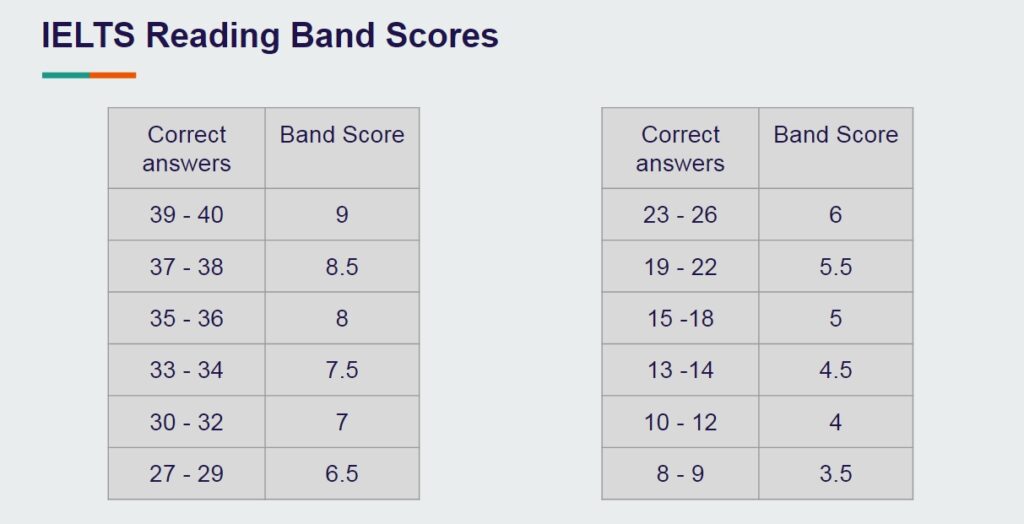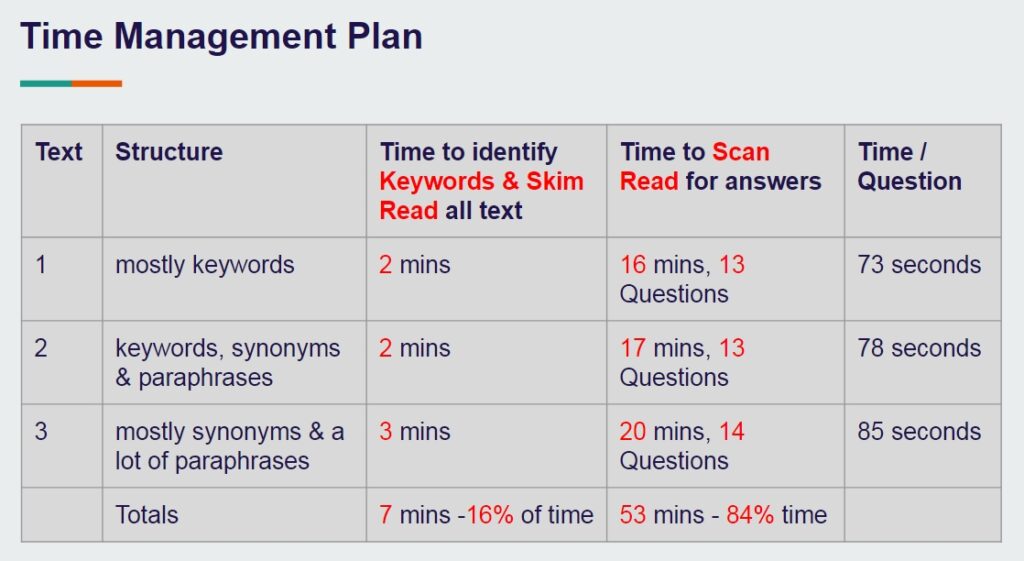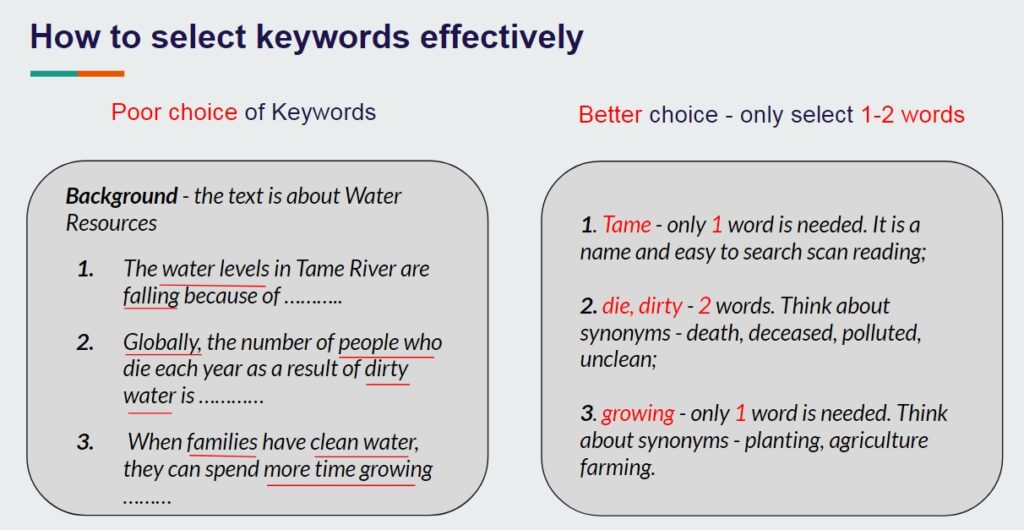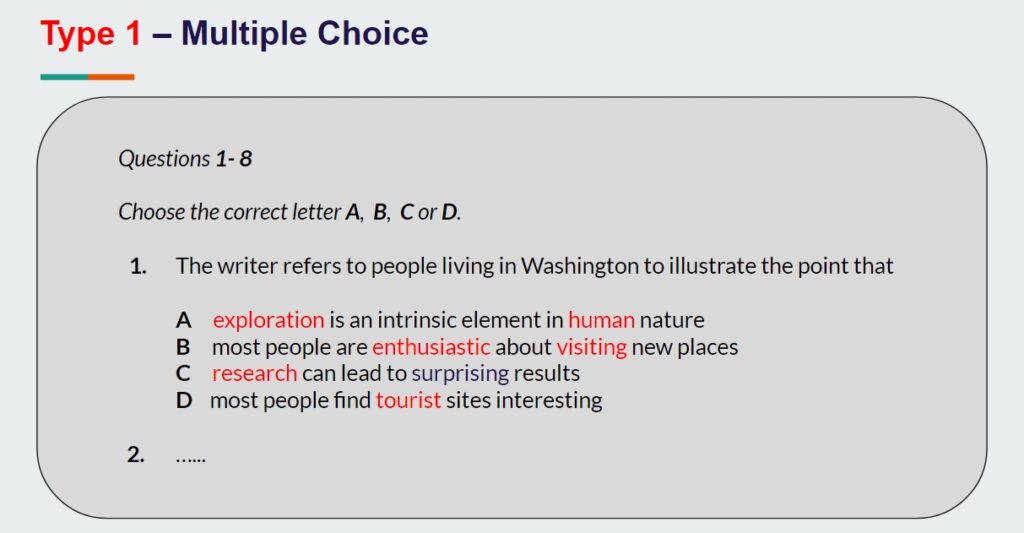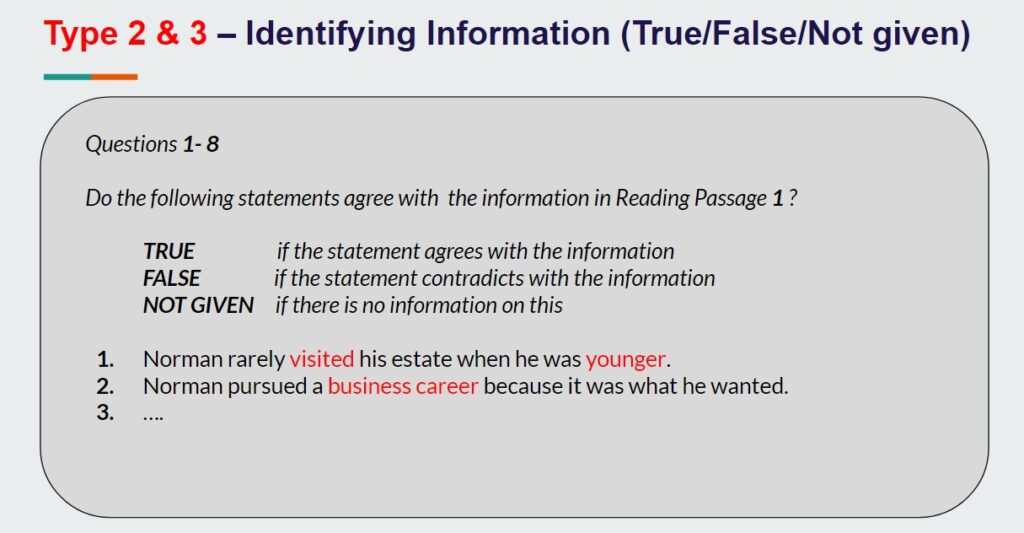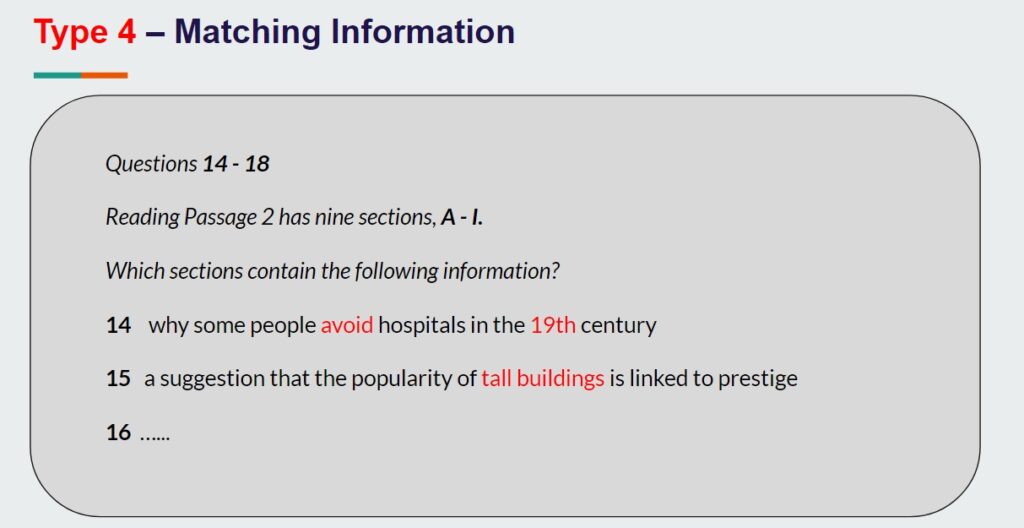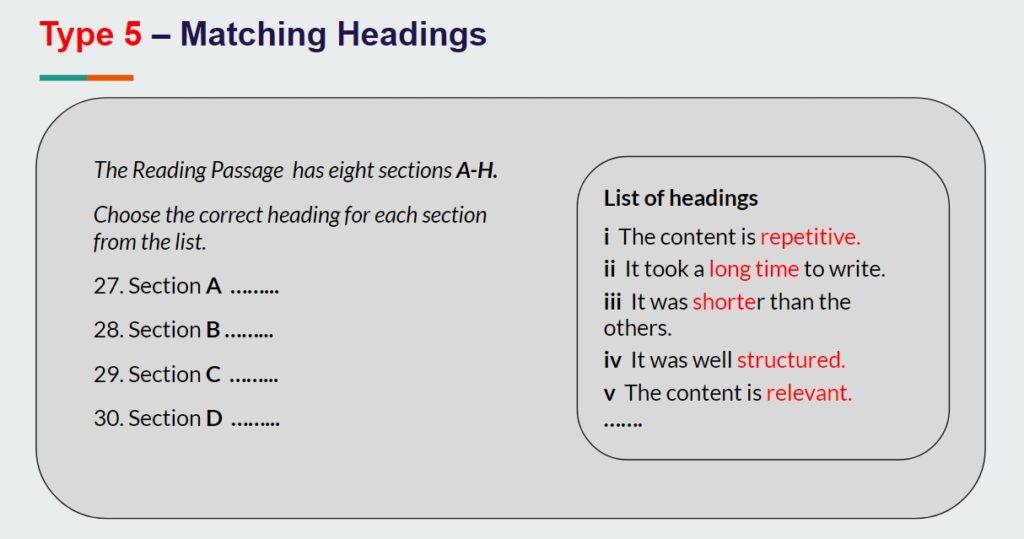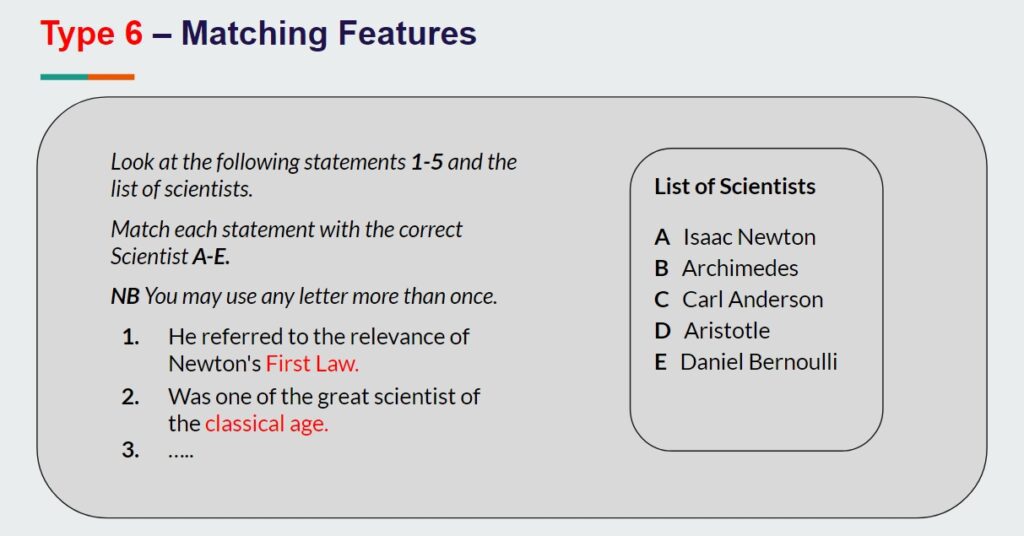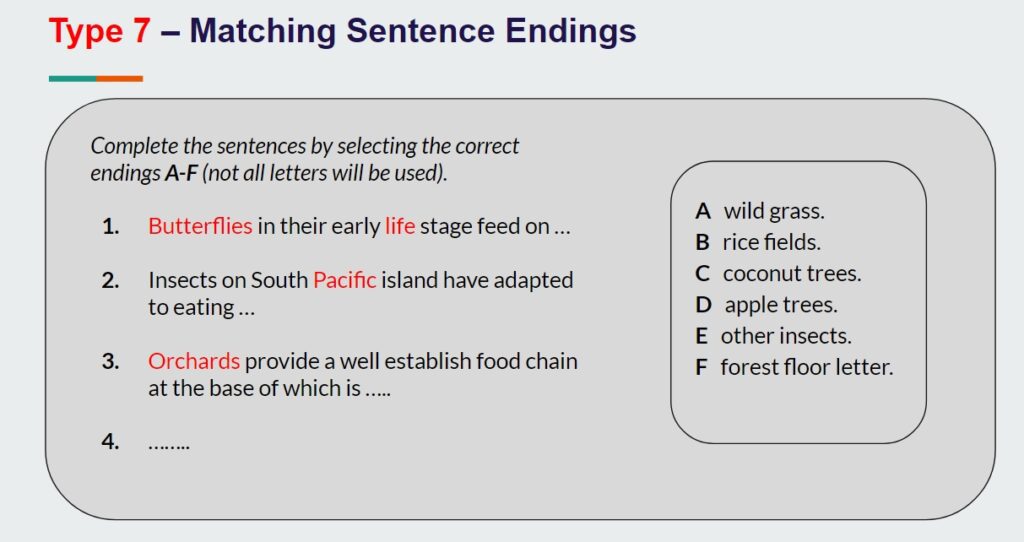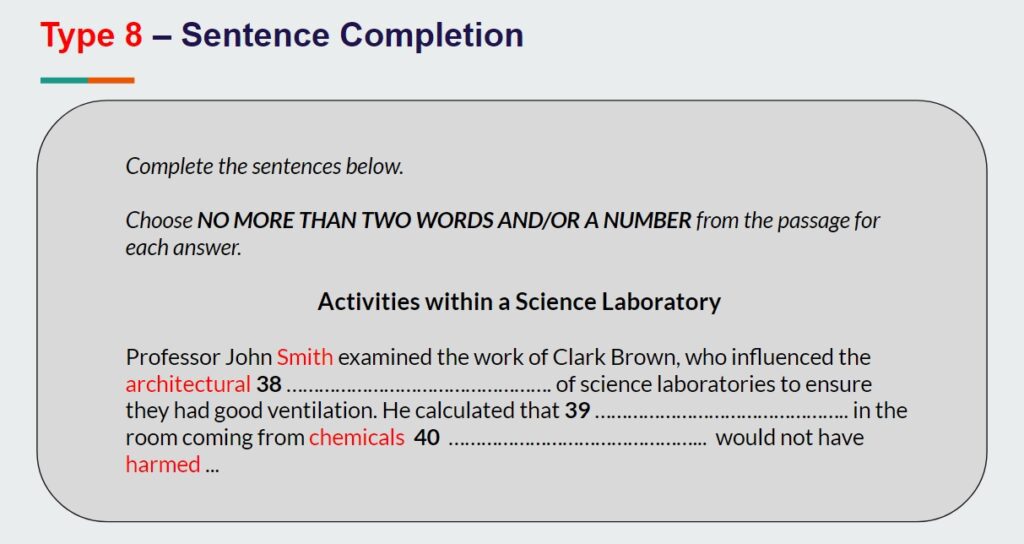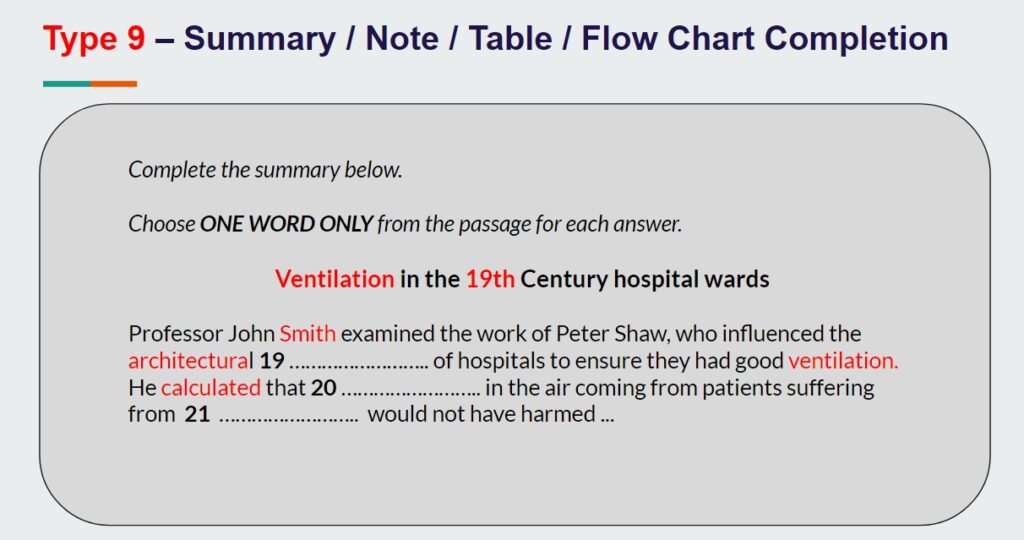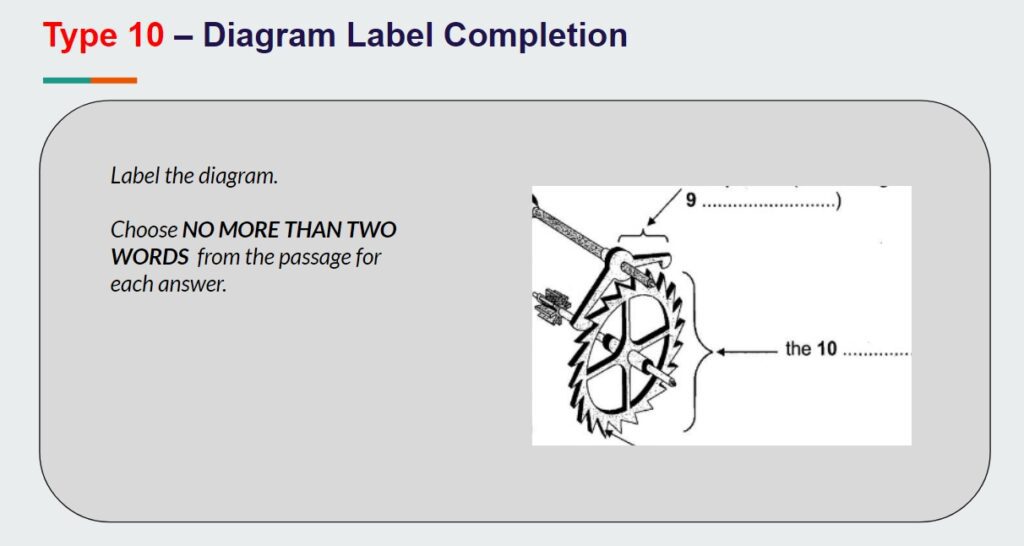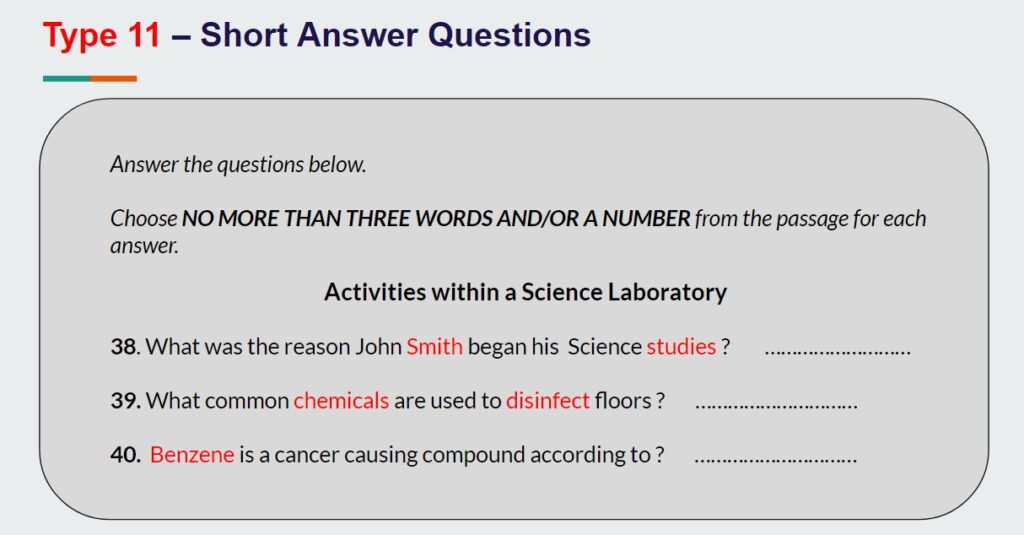How To pass the IELTS Reading Exam - Key Skills
Understand the exam format
The exam is 60 minutes, 40 questions, with 3 reading texts with + 2500 words.
Type 1 – Multiple choice
Type 2 – Identifying information (True/False/Not given)
Type 3 – Identifying writer’s views /claims (Yes/No/Not given)
Type 4 – Matching information
Type 5 – Matching headings
Type 6 – Matching features
Type 7 – Matching sentence endings
Type 8 – Sentence completion
Type 9 – Summary/note/table/flow chart completion
Type 10 – Diagram label completion
Type 11 – Short-answer questions.
IELTS.org provide these sample Test Papers.
Think about a realistic achievement strategy
The reading texts get progressively more challenging because of the use of an increased number of synonyms & paraphrases. The student might adopt a strategy such as:
Text 1: Score 11/13 – possible – keywords – less challenging questions;
Text 2: Score 9/13 – achievable – expect the use of synonyms;
Text 3: Score +7/14 – challenging – a lot of synonyms & paraphrases.
Thus a total of 27 = IELTS 6.5 score.
